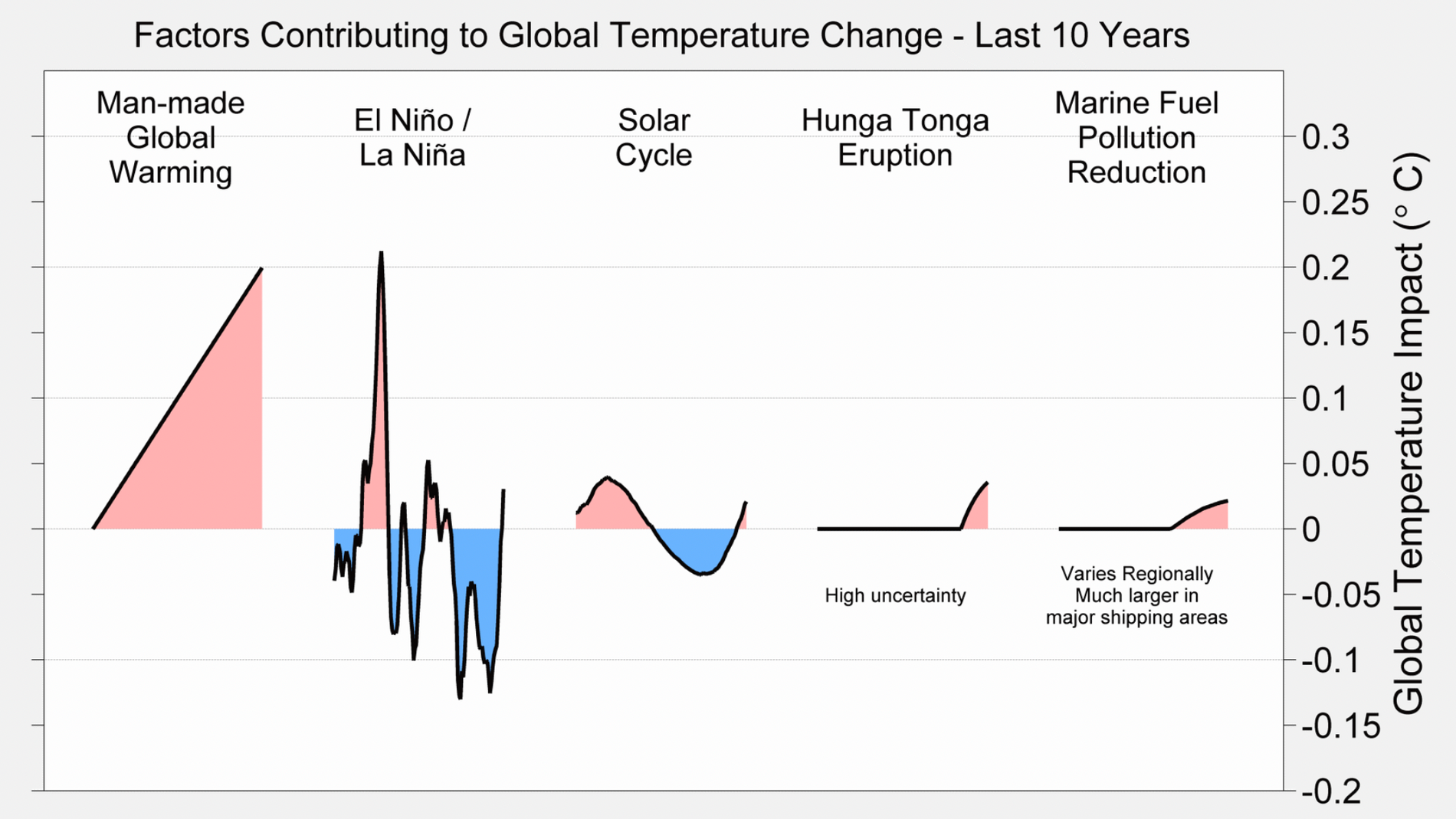Climate change
The frightening report: 1.5 degrees can be reached - already this year
Jonathan Jeppsson
News and dig manager
This is a commenting text. Analysis and positions are the writer's.
Updated 22:32 | Published 20:37
Columnists
The world's countries have the goal of keeping warming below 1.5 degrees.
That goal could crumble as early as this year, according to a new report. The climate institute Berkeley Earth now believes that it is more likely that the warming will reach 1.5 degrees in 2023 - than the opposite.
And next year could be even worse.
There is nothing more dramatic and pulse-raising to study these days than a dry and flat curve from an institute.
The temperature in August was 1.68 degrees warmer than the average between 1850 and 1900. That's a dramatic jump up and means that last month was by far the warmest August on record.
If you only look at the planet's land areas, it was significantly warmer than that - then it's about a warming of 2.27 degrees in August.
The volcanic eruption on Hunga Tonga. Photo: Alamy Stock Photo
Analyzing volcanic eruptions
When the report authors at Berkeley Earth analyze what contributed to the warming, it becomes really interesting, because here they also look at two causes that are usually the main arguments of so-called climate skeptics - solar radiation and the volcanic eruption at Hunga Tonga.
The volcano at Hunga Tonga sent 150 million tons of water vapor into the stratosphere during its eruption in January 2022.
Berkeley Earth can state that both Hunga Tonga and solar activity's contribution to warming is modest, although not entirely negligible - calculations have been made that show that, for example, the volcanic eruption will be attributable to around 0.035 degrees. (Solar activity significantly less than that).
Factors that have contributed to global warming in the last ten years. Photo: Graphics: Berkeley
Earth
However, the institute states that the main reasons for the high temperatures are to be found in man-made global warming and the El Niño weather phenomenon.
55 percent risk
The researchers also state that all of this combined means that there is now a 55 percent risk that 2023 will be the year when we exceed 1.5 degrees.
In that case, the goal that was set in Paris would be blown - even if that goal is not shaken by a single year, but is about keeping the warming below 1.5 degrees in the long term.
But you have to keep in mind that the second year of an El Niño cycle is usually the warmest. There is therefore a great risk that next year will be even hotter.
Will this then have any world political consequences?
It is hardly likely.
About to crash
The world is about to completely collapse in its climate work.
Although some, but not sufficient, progress is being made within the EU, the picture is different globally. The "green transition" that is constantly being talked about is being eaten up by our increasing energy needs.
Take India for example, the world's most populous country: Coal today accounts for more than 70 percent of the electricity supply. Due to increasing population and growing economy, the demand for coal will increase by 40 percent by 2030 – from 900 to 1500 million tons.
But why should Indians bear the blame? Their carbon dioxide emissions of two tonnes per capita are significantly less than the Swedes' 3.5 or 7.5 tonnes, depending on whether consumption-based emissions are included or not. The historical emissions are not much to brag about either, especially not in comparison with, for example, the United States.
The ability, or inability, to meet this challenge is what defines the future for us all.
The risk of blowing the 1.5-degree limit already this year is a clear reminder of how short time is.



Inga kommentarer:
Skicka en kommentar